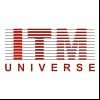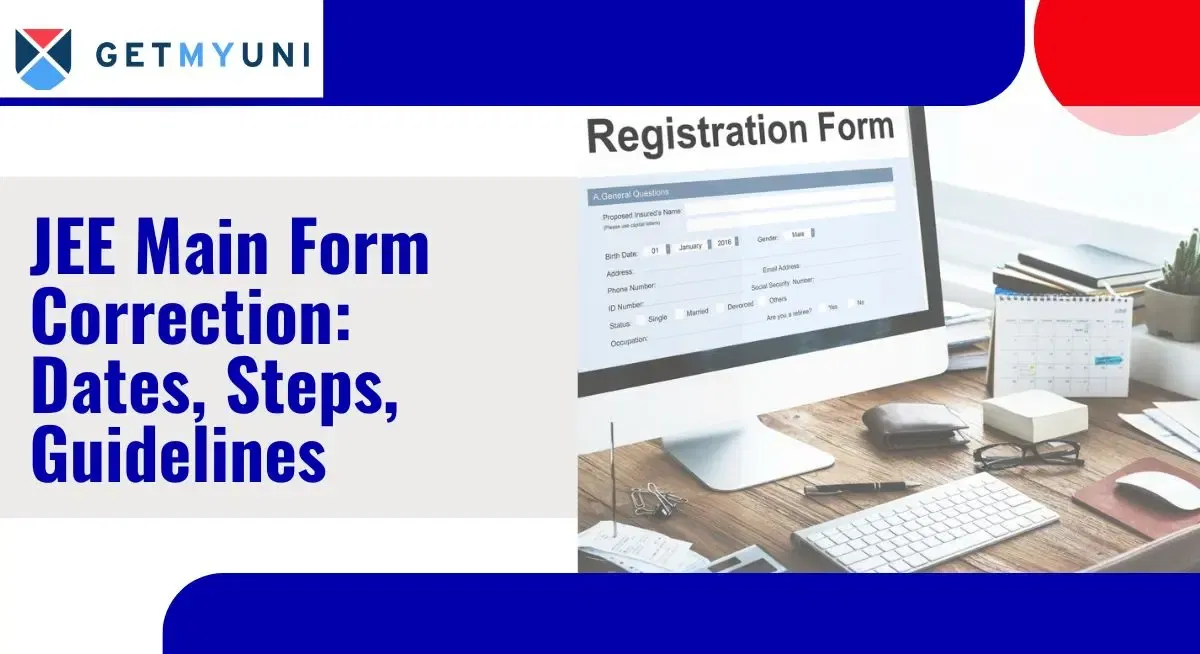JEE Main 2025 reduced syllabus for Maths, Physics, and Chemistry is available for download now. The excluded portion has also been provided for all three subjects. NTA has released the official JEE Main 2025 syllabus.
The National Testing Agency released the new JEE Main 2025 reduced syllabus on its official website. The revised syllabus will be published along with the information bulletin and the official JEE Main exam schedule. For the first time, NTA has also decided to announce the JEE Main result dates along with the release of the information bulletin.
JEE Main 2025 Reduced Syllabus - PDF Link
The PDF link for the JEE main 2025 reduced syllabus is tabulated below for students' reference to get a detail inside about the reduced syllabus:
| Particular | Download Link |
| JEE Main 2025 Reduced Syllabus | PDF Link |
Read More: JEE Main Syllabus 2025
JEE Main 2025 Reduced Syllabus: Subject Wise
It is recommended that those preparing for the IIT JEE exam start with the latest NCERT books. By taking the initiative, they make sure to cover the important ideas and subjects.
Upon the official publication of the JEE Main 2025 reduced syllabus PDF, aspirants have the ability to modify their study plans to incorporate the subjects and chapters that have been removed from the previous NCERT books.
- Physics NCERT Portion: As part of the simplification process, certain topics from both Class 11 and Class 12 have been eliminated.
- Chemistry NCERT Portion: In an effort to simplify the syllabus, a few topics and several chapters have been eliminated.
- Mathematics NCERT Portion: In line with the rationalisation process, all chapters have been kept, with the exception of a few topics removed from Class 11 and Class 12 topics. This is similar to Physics NCERT.
Also Check: JEE Main Tips and Tricks 2025 - Effective Study Plan
JEE Main 2025 Reduced Mathematics Syllabus for Class 11
The detailed JEE main 2025 reduced syllabus for class 11 Mathematics is tabulated below and contains all the topics and sub-topics that is expected to be retained in the new tentative syllabus:
Sets and Functions
- Difference of sets.
- Complement of a set.
- Properties of Complement.
- Relations & Functions- Sum, Difference, product, and quotients of functions (up to RXRXR).
- Trigonometric Functions- General solutions of trigonometric equations of the type siny=sina, cosy=cosa, and tany=tana.
Algebra
- Principle of Mathematical Induction (Deleted)
- Complex Numbers and Quadratic Equations
- Polar representation of complex numbers.
- Square root of a complex number.
- Linear Inequalities (Deleted)
- Permutations and Combinations
- Derivation of formulae for nPr and nCr (n permutation r and n combination r).
Coordinate Geometry
- Straight Lines
- Shifting of origin.
- Equation of a family of lines passing through the point of intersection of two lines.
- Conic Sections
- A point, a straight line, and a pair of intersecting lines as a degenerate case of a conic section.
- Introduction to Three-dimensional Geometry (No topics mentioned)
Calculus
- Limits and Derivatives (No topics mentioned)
Statistics and Probability
- Statistics
- Analysis of frequency distributions with equal means but different variances
- Probability
- Axiomatic (set-theoretic) probability
- Connections with other theories from earlier classes (no specific topics mentioned).
Also Check: Minimum Marks in JEE Advanced 2025 to Get into IIT
JEE Main 2025 Reduced Chemistry Syllabus for Class 11
The detailed JEE main reduced syllabus for class 11 Chemistry is tabulated below and contains all the topics and sub-topics:
Some Basic Concepts in Chemistry
- Matter and its nature
- Dalton's atomic theory: Concept of atom, molecule, element, and compound
- Physical quantities and their measurements in Chemistry, precision, and accuracy, significant figures.
- S.I Units, dimensional analysis
- Laws of chemical combination
- Atomic and molecular masses, mole concept, molar mass, percentage composition, empirical and molecular formulae
- Chemical equations and stoichiometry
Classification of Elements and Periodicity in Properties
- Significance of classification and a brief history of the development of the periodic table remain.
Classification of Elements and Periodicity in Properties
- Chemical Bonding and Molecular Structure
- Kossel - Lewis approach to chemical bond formation, the concept of ionic and covalent bonds.
- Ionic Bonding: Formation of ionic bonds, factors affecting the formation of ionic bonds; calculation of lattice enthalpy.
- Covalent Bonding: Concept of electronegativity. Fajan’s rule, dipole moment: Valence Shell Electron Pair Repulsion (VSEPR ) theory and shapes of simple molecules. Quantum mechanical approach to covalent bonding.
Chemical Bonding and Molecular Structure
- Valence bond theory: its important features, the concept of hybridization involving s, p, and d orbitals; Resonance. Molecular
- Orbital Theory - Its important features. LCAOs, types of molecular orbitals (bonding, antibonding), sigma and pi-bonds, molecular orbital electronic configurations of homonuclear diatomic molecules, the concept of bond order, bond length, and bond energy.
- Elementary idea of metallic bonding.
- Hydrogen bonding and its applications.
Chemical Bonding and Molecular Structure
- Valence Bond Theory: its important features, the concept of hybridization involving s, p, and d orbitals; Resonance.
- Molecular Orbital Theory - Its important features. LCAOs, types of molecular orbitals (bonding, antibonding), sigma and pi-bonds, molecular orbital electronic configurations of homonuclear diatomic molecules, the concept of bond order, bond length, and bond energy.
- Elementary idea of metallic bonding.
- Hydrogen bonding and its applications.
States of Matter: Gases and Liquids
- Liquefaction of gases, critical temperature, kinetic energy and molecular speeds (elementary idea).
Redox Reactions
- Liquefaction of gases, critical temperature, kinetic energy and molecular speeds (elementary idea).
Hydrogen
- Preparation, properties, and uses of hydrogen, hydrogen peroxide – preparation, reactions, and structure and use.
s-Block Elements
- Preparation and Properties of Some Important Compounds: Sodium Carbonate, Sodium Chloride, Sodium Hydroxide, and Sodium Hydrogen Carbonate. Biological importance of Sodium and Potassium.
- Calcium Oxide and Calcium Carbonate and their industrial uses. Biological importance of Magnesium and Calcium.
Some p-Block Elements
- Some important compounds – Borax, Boric acid, Boron Hydrides
- Aluminium: Reactions with acids and alkalis, uses.
- Carbon: uses of some important compounds: oxides.
- Important compounds of Silicon and a few uses: Silicon Tetrachloride, Silicones, Silicates, and Zeolites, their uses.
Organic Chemistry
- Methods of purification, qualitative and quantitative analysis.
Hydrocarbons
- Free radical mechanism of halogenation, combustion, and pyrolysis.
Also Check: Top 10 Most Expensive Engineering Colleges in India 2025
JEE Main 2025 Reduced Physics Syllabus for Class 11
The detailed JEE main reduced syllabus for class 11 Physics is tabulated below and contains all the topics and sub-topics:
Physical World
- Physics, technology, and society,
- S I Units, fundamental and derived units, least count, accuracy and precision of measuring instruments
- Errors in measurement
- Dimensions of Physics quantities, dimensional analysis, and its applications.
Motion in a Straight Line
- The frame of reference, motion in a straight line
- Position- time graph, speed and velocity
- Uniform and non-uniform motion, average speed and instantaneous velocity, uniformly accelerated motion, velocity-time, position-time graph, relations for uniformly accelerated motion
- Scalars and Vectors- addition and subtraction, zero vector, scalar and vector products, Unit Vector, Resolution of a Vector
- Relative Velocity
- Motion in a Plane- Projectile Motion, Uniform Circular Motion
Laws of Motion
- Intuitive concept of force
- Inertia & Newton’s first law of motion
- Momentum & Newton’s second law of motion
- Impulse & Newton’s third law of motion
System of Particles and Rotational Motion
- Statement of parallel and perpendicular axes theorems and their applications.
Mechanical Properties of Solids
- Elastic behaviour
- Shear modulus of rigidity
- Poisson’s ratio
- Elastic energy
Thermal Properties of Matter
- Heat
- Temperature
- Heat transfer – conduction, convection, and radiation
Waves
- Fundamental mode and harmonics
- Doppler effect
Also Check: Civil Engineering vs Mechanical Engineering
JEE Main 2025 Reduced Mathematics Syllabus for Class 12
The detailed JEE main reduced syllabus for class 12 Mathematics is tabulated below and contains all the topics and sub-topics:
Relations and Functions
- Relations and Functions
- Composite functions
- Inverse of a function
- Inverse Trigonometric Functions
- Graphs of inverse trigonometric functions
- Elementary properties of inverse trigonometric function
Algebra
- Matrices
- Existence of non-zero matrices whose product is the zero matrix
- Concept of elementary row and column operations
- Proof of the uniqueness of the inverse, if it exists
- Determinants
- Properties of determinants
- Consistency, inconsistency, and the number of solutions of a system of linear equations by examples
Calculus
- Continuity and Differentiability
- Rolle’s and Lagrange’s Mean Value Theorems (without proof) and their geometric interpretation.
- Applications of Derivatives
- Rate of change of bodies
- Use of derivatives in approximation
- Integrals
- ∫ √ax², ∫ (ax + b)√(ax² + bx + c) dx
- Definite integrals as a limit of a sum
- Applications of the Integrals
- Area between any of the two above-said curves
- Differential Equations
- Formation of a differential equation whose general solution is given
- Solutions of linear differential equations of the type: ds+px=q, where p and q are functions of y or constants, i.e., dy
Vectors and Three-Dimensional Geometry
- Vectors
- Scalar triple product of vectors.
- Three-Dimensional Geometry
- Angle between
- (i) two lines
- (ii) two planes
- (iii) a line and a plane
Linear Programming
- Linear Programming
- Mathematical formulation of L.P. problems (unbounded)
Probability
- Probability
- Mean and variance of a random variable
- Binomial probability distribution
Also Check: JEE Main FAQs (Frequently Asked Questions)
JEE Main 2025 Reduced Chemistry Syllabus for Class 12
The detailed JEE main reduced syllabus for class 12 Chemistry is mentioned below and contains all the topics and sub-topics:
p-block Elements
- Group 13 to Group 17 Elements
- General Introduction: Electronic configuration and general trends in physical and chemical properties of elements across the periods and down the groups; unique behaviour of the first element in each group. Groupwise study of the p - block elements
- Group -13
- Preparation, properties, and uses of boron and aluminium; Structure, properties, and uses of borax, boric acid, diborane, boron trifluoride, aluminium chloride, and alums.
- Group -14
- The tendency for catenation; Structure, properties, and uses of Allotropes and oxides of carbon, silicon tetrachloride, silicates, zeolites, and silicones.
- Group -15
- Properties and uses of nitrogen and phosphorus; Allotropic forms of phosphorus; Preparation, properties, structure, and uses of ammonia, nitric acid, phosphine, and phosphorus halides, (PCl3. PCl5); Structures of oxides and oxoacids of nitrogen and phosphorus.
- Group -16
- Preparation, properties, structures, and uses of ozone: Allotropic forms of sulphur; Preparation, properties, structures, and uses of sulphuric acid (including its industrial preparation); Structures of oxoacids of sulphur.
- Group -17
- Preparation, properties, and uses of hydrochloric acid; Trends in the acidic nature of hydrogen halides; Structures of Interhalogen compounds and oxides and oxoacids of halogens.
d & f-block Elements
- Transition Elements
- General introduction- Electronic configuration, occurrence and characteristics
- General trends in properties of the first-row transition elements - physical properties, ionisation enthalpy, oxidation states, atomic radii, colour, catalytic behaviour, magnetic properties, complex formation, interstitial compounds, alloy formation
- Preparation, properties, and uses of K2Cr2O7, and KMnO4
- Inner Transition Elements
- Lanthanoids - Electronic configuration, oxidation states, and lanthanide contraction
- Actinides - Electronic configuration and oxidation states
Coordination Compounds
- Introduction to coordination compounds.
- Werner's theory
- Ligands, coordination number, denticity. chelation
- IUPAC nomenclature of mononuclear coordination compounds, isomerism
- Bonding-Valence bond approach and basic ideas of Crystal field theory, colour and magnetic properties
- Importance of coordination compounds (in qualitative analysis, extraction of metals and in biological systems)
Haloalkanes & Haloarenes
- General methods of preparation, properties, and reactions
- Nature of C-X bond
- Mechanisms of substitution reactions
- Uses & Environmental effects of chloroform, iodoform freons, and DDT
Alcohols, Phenols, and Ethers
- Alcohols: Identification of primary, secondary, and tertiary alcohols
- Mechanism of Dehydration.
- Phenols: Acidic nature, electrophilic substitution reactions
- Halogenation, nitration and sulphonation
- Reimer - Tiemann Reaktion
- Ethers: Structure
Amines
- General methods of preparation
- Properties, reactions, and uses
- Nomenclature, classification structure, basic character, and identification of primary, secondary, and tertiary amines and their basic character
- Diazonium Salts: Importance in synthetic organic chemistry
Biomolecules
- General introduction and importance of biomolecules.
- Carbohydrates - Classification; aldoses and ketoses: monosaccharides (glucose and fructose) and constituent monosaccharides of oligosaccharides (sucrose, lactose, and maltose)
- Proteins - Elementary Idea of a-amino acids, peptide bonds, polypeptides. Proteins: primary, secondary, tertiary, and quaternary structure (qualitative idea only), denaturation of proteins, enzymes
- Vitamins – Classification and functions
- Nucleic Acids – Chemical constitution of DNA and RNA. Biological functions of nucleic acids
Also Check: JEE Main Cutoff for IIITs
JEE Main 2025 Reduced Physics Syllabus for Class 12
The detailed JEE main reduced syllabus for class 12 Physics is given below and contains all the topics and sub-topics:
Optics
- Reflection and refraction of light at plane and spherical surfaces, mirror formula
- Total internal reflection and its applications
- Deviation and Dispersion of light by a prism
- Lens Formula
- Magnification
- Power of a Lens
- Combination of thin lenses in contact
- Microscope and Astronomical Telescope (reflecting and refracting) and their magnifying powers
- Wave optics- wavefront and Huygens' principle
- Laws of reflection and refraction using Huygens principle
- Interference
- Young's double-slit experiment and expression for fringe width, coherent sources, and sustained interference of light
- Diffraction due to a single slit, width of central maximum
- Resolving power of microscopes and astronomical telescopes
- Polarisation, plane-polarised light
- Brewster's law
- Uses of plane-polarised light and polaroid
Dual Nature of Matter and Radiation
- Dual nature of radiation
- Photoelectric effect
- Hertz and Lenard's observations
- Einstein's photoelectric equation: particle nature of light
- Matter waves-wave nature of particles, de Broglie relation
- Davisson-Germer experiment
Electronic Devices
- Semiconductors & semiconductor diode
- 1-V characteristics in forward and reverse bias; diode as a rectifier
- 1-V characteristics of LED
- The photodiode, solar cell, and zener diode as a voltage regulator
- Junction transistor, transistor action, characteristics of a transistor: transistor as an amplifier (common emitter configuration) and oscillator
- Logic gates (OR. AND. NOT. NAND and NOR)
- Transistor as a switch
Communication Systems
- Propagation of electromagnetic waves in the atmosphere
- Sky and space wave propagation
- Need for modulation
- Amplitude and Frequency Modulation, Bandwidth of signals
- The bandwidth of the Transmission medium
- Basic Elements of a Communication System (Block Diagram only)
Also Check: Best Study Material for JEE Main
JEE Main 2025 Syllabus: Excluded Portion
JEE Main 2025 syllabus’ tentative excluded portion of all three subjects, i.e., chemistry, physics, and mathematics, are listed below for students' reference:
JEE Main Chemistry Syllabus 2025: Excluded Portion
- Hydrolysis of salts (elementary idea), Henderson Equation
- Nature of matter, laws of chemical combination, Dalton's atomic theory: the concept of elements, atoms, and molecules.
- Discovery of Electron, Proton, Neutron, atomic number, isotopes and isobars. Thomson's model and its limitations, Rutherford's model and its limitations.
- Liquid State – Vapour pressure, viscosity, and surface tension (qualitative idea only, no mathematical derivations).
- Heat capacity and specific heat capacity, Criteria for equilibrium.
- General introduction and classification of polymers, general methods of polymerization, - Addition and condensation, copolymerization.
- Natural and synthetic, rubber and vulcanization, some important polymers with emphasis on their monomers and uses – polythene, nylon, polyester, and bakelite.
- General Introduction: Important and scope of chemistry
- Chemicals in Medicines - Analgesics, tranquilisers, antiseptics, disinfectants, antimicrobials, anti-fertility drugs, antibiotics, antacids.
- Antihistamines -their meaning and common examples.
JEE Main Physics Syllabus 2025: Excluded Portion
- Physics and measurement
- Kinematics
- Rotational Motion
- Properties of Solids and Liquids
- Electrostatics
JEE Main Mathematics Syllabus 2025: Excluded Portion
- Mathematical Reasoning
Also Check: JEE Main Revision Plan
The revised JEE Main syllabus gives an opportunity to minimize the burden of covering deeper topics. The students can utilize the time to strengthen the important topics in depth.






















